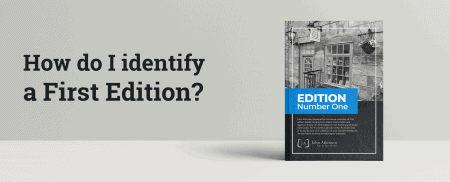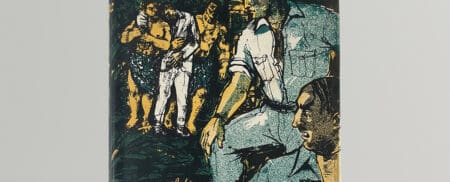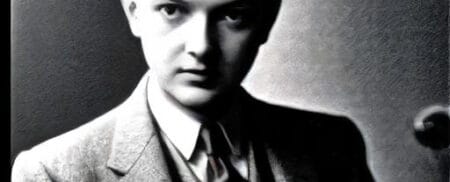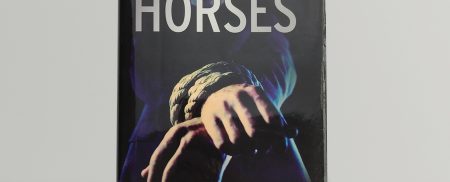To The Lighthouse – Virginia Woolf’s Meticulous Attention to Detail
Virginia Woolf, a pioneering figure in modernist literature, left an indelible mark on the literary landscape with her innovative prose style, penetrating psychological insights, and profound exploration of the human condition. “To the Lighthouse,” one of Woolf’s most celebrated works, stands as a masterpiece of modernist fiction, showcasing her unparalleled talent for capturing the complexities of human experience with sensitivity and depth.
Published in 1927, “To the Lighthouse” is a novel of introspection, memory, and the passage of time. Set against the backdrop of a summer vacation on the Isle of Skye, the novel unfolds in three parts, each offering a distinct perspective on the lives of the Ramsay family and their guests.
The genesis of “To the Lighthouse” can be traced back to Woolf’s own childhood experiences and memories. The novel draws heavily from Woolf’s recollections of her family’s summer retreats in Cornwall, where she spent idyllic days exploring the coastline and contemplating the mysteries of existence. These formative experiences provided the inspiration for the novel’s setting and themes, as well as its evocative portrayal of the natural world and the passage of time.
Woolf’s writing process for “To the Lighthouse” was marked by a meticulous attention to detail and a commitment to experimentation. Known for her stream-of-consciousness technique, Woolf sought to capture the inner workings of her characters’ minds with a fluidity and immediacy that mirrored the ebb and flow of thought itself. This innovative narrative style allowed Woolf to delve deep into the psyche of her characters, revealing their innermost thoughts, desires, and fears with an intimacy that was unprecedented in English literature.
The novel’s structure is characterised by its fluidity and non-linear narrative, reflecting the fragmentary nature of memory and perception. Woolf eschews traditional plot-driven storytelling in favour of a more impressionistic approach, weaving together multiple perspectives and narrative threads to create a mosaic of interconnected moments and impressions. Through her skilful manipulation of time and perspective, Woolf invites readers to experience the passage of time as her characters do, moving fluidly between past, present, and future with a sense of fluidity and grace.
At the heart of “To the Lighthouse” lies the enigmatic figure of Mrs. Ramsay, whose presence looms large over the narrative even in her absence. A paragon of maternal warmth and domesticity, Mrs. Ramsay embodies the idealised Victorian womanhood of Woolf’s youth, yet she is also a complex and multi-dimensional character, grappling with her own doubts, insecurities, and unfulfilled desires. Through Mrs. Ramsay, Woolf explores themes of gender, power, and the limitations of social convention, challenging traditional notions of femininity and womanhood in the process.
In contrast to Mrs. Ramsay’s warm and nurturing presence stands the austere figure of Mr. Ramsay, her husband and the patriarch of the family. A philosopher and academic, Mr. Ramsay is consumed by his own intellectual pursuits and existential anxieties, often at the expense of his relationships with his family. Through the dynamic between Mr. and Mrs. Ramsay, Woolf explores the tensions between intellect and emotion, duty and desire, illuminating the complexities of human relationships and the elusive nature of connection.
“To the Lighthouse” is also notable for its richly drawn supporting characters, each of whom contributes to the novel’s multifaceted exploration of identity, memory, and the search for meaning. From the artist Lily Briscoe, who struggles to reconcile her artistic ambitions with the demands of society, to the enigmatic figure of Charles Tansley, whose insecurities and social awkwardness mask a deeper longing for acceptance and belonging, Woolf populates her novel with a diverse array of characters whose lives intersect and overlap in unexpected ways.
Throughout “To the Lighthouse,” Woolf demonstrates her mastery of language and her keen understanding of the human psyche, crafting prose that is at once lyrical, evocative, and profoundly moving. Her descriptions of the natural world are suffused with a sense of awe and wonder, while her exploration of the inner lives of her characters is marked by a rare depth of insight and empathy. Through her innovative narrative techniques and her nuanced portrayal of the human experience, Woolf invites readers to contemplate the mysteries of existence and the fleeting nature of time with a sense of wonder and reverence.
In conclusion, “To the Lighthouse” stands as a towering achievement in the canon of modernist literature, showcasing Virginia Woolf’s unparalleled talent for capturing the complexities of human experience with sensitivity, insight, and grace. Through her innovative narrative style, her richly drawn characters, and her profound exploration of memory, identity, and the passage of time, Woolf invites readers on a transformative journey of self-discovery and introspection. As relevant and resonant today as it was nearly a century ago, “To the Lighthouse” remains a timeless masterpiece of literary fiction, a testament to the enduring power of Virginia Woolf’s singular vision and her enduring legacy as one of the greatest writers of the 20th century.
For our own copy of ‘To The Lighthouse’ First Edition, please click here
Found out more about Virginia Woolf here











